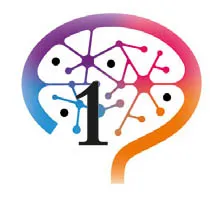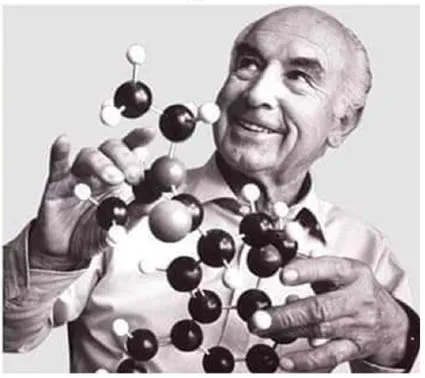![]()
INTRODUCTION
MENTAL HEALTH CRISIS
How to begin this book? I close my eyes and take a deep breath, feeling that silent inner core whose existence I ignored a few years ago. And I wonder, would I have ever discovered it had I never tried psychedelics? I doubt it. How can someone start searching for something if they don’t know it exists?
Now that in the West mindfulness and meditation have reached the mainstream, many people are discovering that other way of being and feeling, that inner core, through this avenue. However, at least on this side of the planet, this phenomenon was, undoubtedly, sparked by the countercultural movement of the 60’s brought about by the recreational use of LSD. Even today, when most people have already heard about meditation, many, myself included, only began to understand its value after having lived the psychedelic experience.
Suddenly, spiritual clichés previously devoid of meaning make perfect sense. One clearly understands the oneness of humanity and that of the holy whole. And, by sharpening the sensations related to breathing, paying attention to the present moment, and slowing down the inner dialogue, one obtains a deep and unimaginable peace. But unlike meditation, through which achieving such a revelatory experience usually requires years of practice, with psychedelics it is often just a matter of taking the right dose in the right environment.
It is not surprising that experiences of this nature have the potential to bring about psychological well-being. However, as we shall see, this is not always the case. Unlike meditation, the psychedelic experience also has the potential to promote high levels of anxiety, intense panic and even psychotic breaks, especially when abused or conducted in the wrong environment. As with so many other decisions in life, it all falls down to assessing the risk-benefit balance and acting responsibly. And, it is my opinion that, for many people, the benefits outweigh the risks.
Despite famines have disappeared, death from disease and violence have been drastically reduced, and we have constant access to clean water, as well as supermarkets stocked with food, there is no doubt that our society is facing a serious mental health crisis. According to the INE (The Spanish National Institute of Statistics), ten people per day were already committing suicide in Spain before the pandemic- ten times more than the number of deaths due to traffic accidents!
Trauma, loneliness, and chronic stress. And a profound lack of meaning. Millions of people live kidnapped by their emotions. Possessed by them, some would say. Unable to be the masters of their behaviour. We all experience this to a greater or lesser extent, but, why are some more resilient and able of a better emotional regulation than others? What is it that human beings require to heal their wounds and enjoy a life full of meaning?
The many available anxiolytics, antidepressants, psychotherapeutic techniques, and even the newly arrived and welcomed mindfulness, do not seem to be enough. Despite their undeniable utility, these tools seem to be failing for a disturbingly high number of people. Psychotherapy is expensive and time-consuming, and psychotropic drugs often have unpleasant side effects. What is more, even in the absence of side effects and with time and money at their disposal, many patients are still unable to free themselves from a constant sense of deep fear and suffering. Could highly stigmatized substances associated with the world of night-time debauchery be the new tool we so desperately need?
As we shall see, this may indeed be the situation we find ourselves in. But what substances are we referring to exactly? How should they be used? What psychopathologies could be treated with such molecules? Throughout this book, we will focus on two types of substances whose research in psychotherapeutic settings has exploded in the last decade: classic psychedelics (LSD, psilocybin and DMT) and empathogens (MDMA).
We will begin by briefly reviewing the story behind how each one of these substances was first discovered and used before their illegalization. For a more in-depth reading regarding their fascinating history, we recommend the book from this collection written by Antón Gómez-Escolar Sanz. The current book will, instead, mainly focus on reviewing the clinical studies that reveal their promising psychotherapeutic potential, describing their subjective effects, and explaining their underlying neuroscience.
To ease the understanding of this last goal, I thought it necessary to include an introductory chapter to neuroscience. In that chapter, we will study the anatomy and functioning of a neuron (receptors, neurotransmitters, action potentials, etc.). We will also learn about how, in order to allow for a conscious experience to emerge, the information gathered by the senses is integrated, focusing on the essential role played by the thalamus (a subcortical structure), the cerebral cortex and the required encoding processes. We will also study the way in which our decisions are guided by our fears and desires, and how the cortical activity is organized into functional networks. Thanks to this, the relevant concepts will be well understood when we later embark on the scientific theories regarding how these substances alter ordinary states of consciousness and why such alterations may have therapeutic effects. Readers with advanced knowledge of neuroscience can skip this chapter if they wish to, while those new to the topic can easily return to it as concepts reappear in future chapters. I hope that you will enjoy this journey, travelling from the inner world of a neuron up to human behaviour!
A warning is needed before we delve into this material. Although neuroscience is undoubtedly advancing, we still have many more questions than answers. Despite this, even if only in a limited and reductionist way, we are gradually approaching a more accurate, or at least more detailed, version of that which we did not know before. Where only a vacuum of knowledge existed before, a new universe of data, theories, and, of course, new questions now emerges. As we will appreciate throughout the book, and as anyone can intuitively imagine, the complexity we face when trying to study the brain and, more specifically, the brain-mind relationship, is practically infinite. Imagine adding mental health to this already complicated dyad! By this, I would like to caution you that the information presented in this book, particularly that related to these substances’ mechanisms of action, offers only theories. As such, they will be subject to change as research progresses. We will often have to engage in an intensive speculative exercise, especially, when interpreting the neuroimaging results. This is the only way in which science can advance when the field we study is as deeply complex and unknown as the brain! Having said that, I hope to be able to convey, in a clear and accurate manner, the knowledge I have accumulated over the years about psychedelic’s clinical potential, neurobiology, and cognitive neuroscience.
THE DISCOVERY, PROHIBITION, AND REBIRTH OF NEW TOOLS IN PSYCHOTHERAPY
Nowadays most ordinary citizens associate substances such as LSD, magic mushrooms or the famous ecstasy, with recreational environments. Although more and more people are becoming aware of their therapeutic applications, very few know that it was within a clinical setting where they first appeared. But they eventually escaped from the laboratories and entered the world of leisure, which culminated in their subsequent illegalization and stigmatization. It is for this reason that the recent return of these substances to the research institutions is being called "the psychedelic renaissance", given that there was already extensive research into their psychotherapeutic potential in the past. With the advent of the Controlled Substances Act and the beginning of the war on drugs, promoted by Nixon in the early 1970s, such research was, however, abruptly halted and the regulatory agencies of the time placed both molecules (first LSD and later MDMA) in the Schedule 1 category (the same category as heroin!). This is where substances supposedly devoid of medical use, considered dangerous even under supervision, and with a high potential for abuse, are placed. Why were they placed here?
Such classification was mainly motivated by political and social reasons rather than based on medical evidence. The psychedelic experience was leading young people to demonstrate against the Vietnam War and the materialistic culture, revolutionizing the American society and threatening the social order of the time. It would, however, be unfair to ignore that its careless use was spreading throughout the youth, causing frequent accidents and traumatic experiences in users. Nevertheless, studies carried out with LSD and MDMA under controlled settings were pointing to an important medical potential that was, either intentionally or accidentally, ignored by the legislators when they decided to classify them into the Schedule 1 category. But let’s not get ahead of ourselves and return to the beginning of these molecules’ fascinating discovery.
Lysergic acid diethylamide, known as LSD, was first synthesized by the chemist Albert Hoffman in 1938. At the time, Hoffman was working for Sandoz, a pharmaceutical company based in Basel, Switzerland. They were trying to find a treatment for migraines, searching for molecules with vasostimulant properties in ergot (a fungus that infects rye). However, animal studies revealed no effects, other than a certain behavioural agitation, so further research was discarded.
However, for some mysterious reason, five years later this molecule was still present in the chemist’s mind, as he had a "peculiar presentiment" that the molecule hid some interesting property. In retrospect, he recounts how it was not him who chose LSD but LSD who "found" him and "called" him. On April 16, 1943, he proceeded to repeat his synthesis, despite Sandoz having a strict policy against resuming research with substances that had been previously discarded.
It was during the last synthesis processes that Hoffman began to feel the first unusual sensations. A certain agitation and dizziness seized his body, forcing him to interrupt his work and go home to rest. Once there, lying on the sofa, he began feeling a certain intoxication which he described as not unpleasant. On closing his eyes "an uninterrupted stream of fantastic pictures, extraordinary shapes with intense, kaleidoscopic play of colours" occupied his mind, eventually concluding that he must have absorbed a small amount of the substance he’d been working with.
Albert Hoffman holding a representation of LSD’s molecular structure.
Intrigued as to how a molecule could have such a powerful psychoactive effect, three days later he ventured to take 0.25mg in a controlled manner under the superv...


